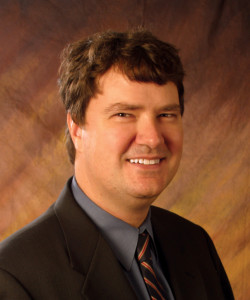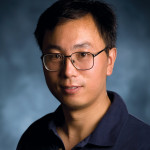
You may have a highly advanced medical detection device in your pocket right now!
Along with colleague Jiming Bao, Richard Willson is working to turn smartphones into precision detectors of viruses and disease.
Richard Willson is the Huffington-Woestemeyer professor of chemical and biomolecular engineering and a professor of biochemical and biophysical sciences at the University of Houston. He earned his PhD in chemical engineering at the Massachusetts Institute of Technology in 1988.
Richard Willson – Smartphone Medical Apps

My colleague Jiming Bao is an expert in nano-photonics, the behavior of light on the very small scale. I am interested in detecting disease organisms, viruses, and cancer biomarkers in time to do something about it. Together, we are trying to turn your cell phone into a sensitive diagnostic device.
The immune system can evolve antibodies to bind to almost any target, and we used antibodies here. We capture the target on an antibody bound to a glass slide. While inexpensive lenses can make cell phone cameras into fairly good microscopes, viruses and proteins are too small for any optical microscope. So we make them visible using a second antibody carrying a label.
Our label is an enzyme catalyst that can deposit silver metal using the chemistry of black and white photography. Our main advance is a new nanoholes approach to seeing the tiny silver particles. In the old way, deposited silver slightly dims the light passing through the slide as a whole.
In our approach, Dr. Bao’s clever methods divide the surface into an array of tiny windows, each of which appears as a bright spot in a microscope image. If even a tiny particle is deposited in a given window, it is dimmed or blotted out. Our goal is a phone camera that counts the dimmed spots, and an app that reports the results.
Finally, I’ll note that the same detection principle applies to eclipses of stars by asteroids. Even a small, dim asteroid passing in front of a bright star makes its presence clear. The same effect, blotting out a light source, is the basis of our detection.
Read more: Transmissive Nanohole Arrays for Massively Parallel Optical Biosensing
